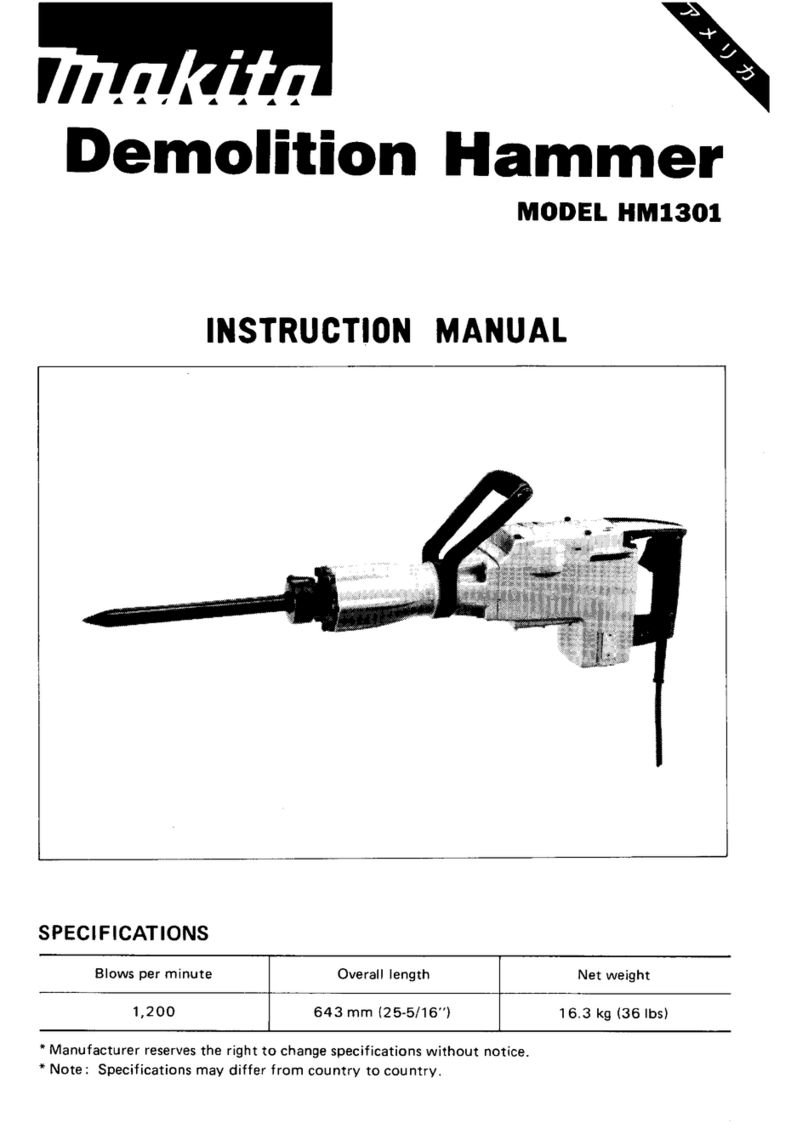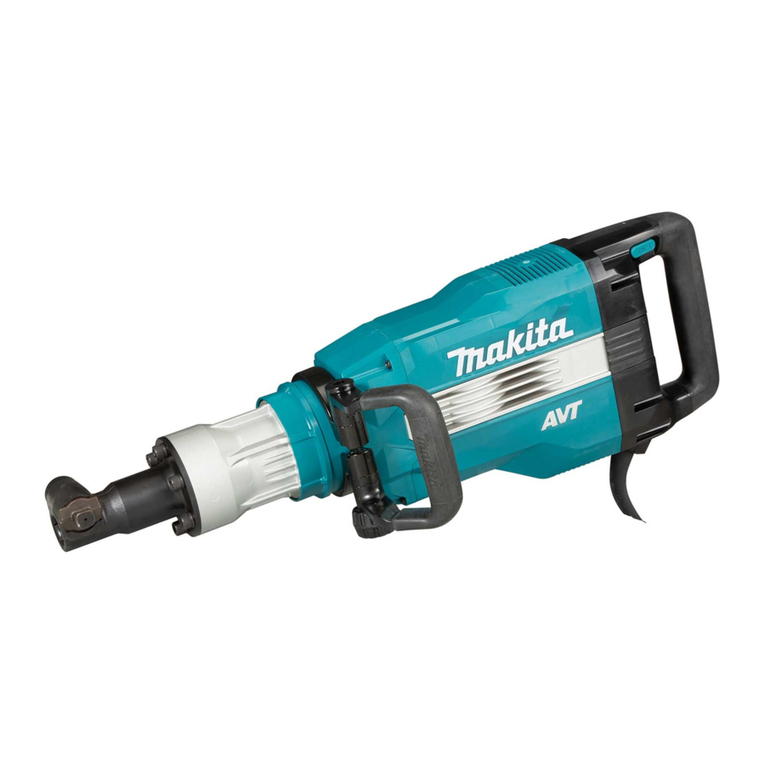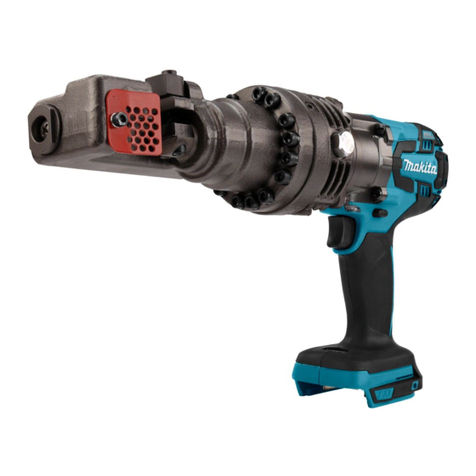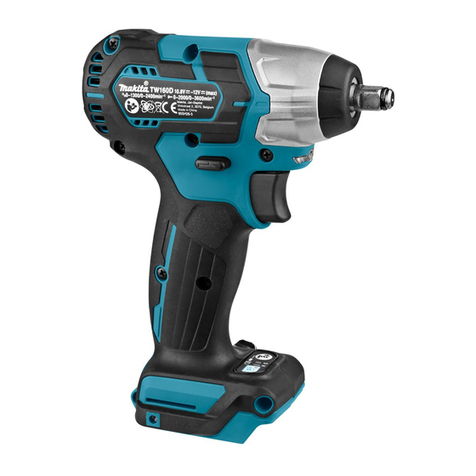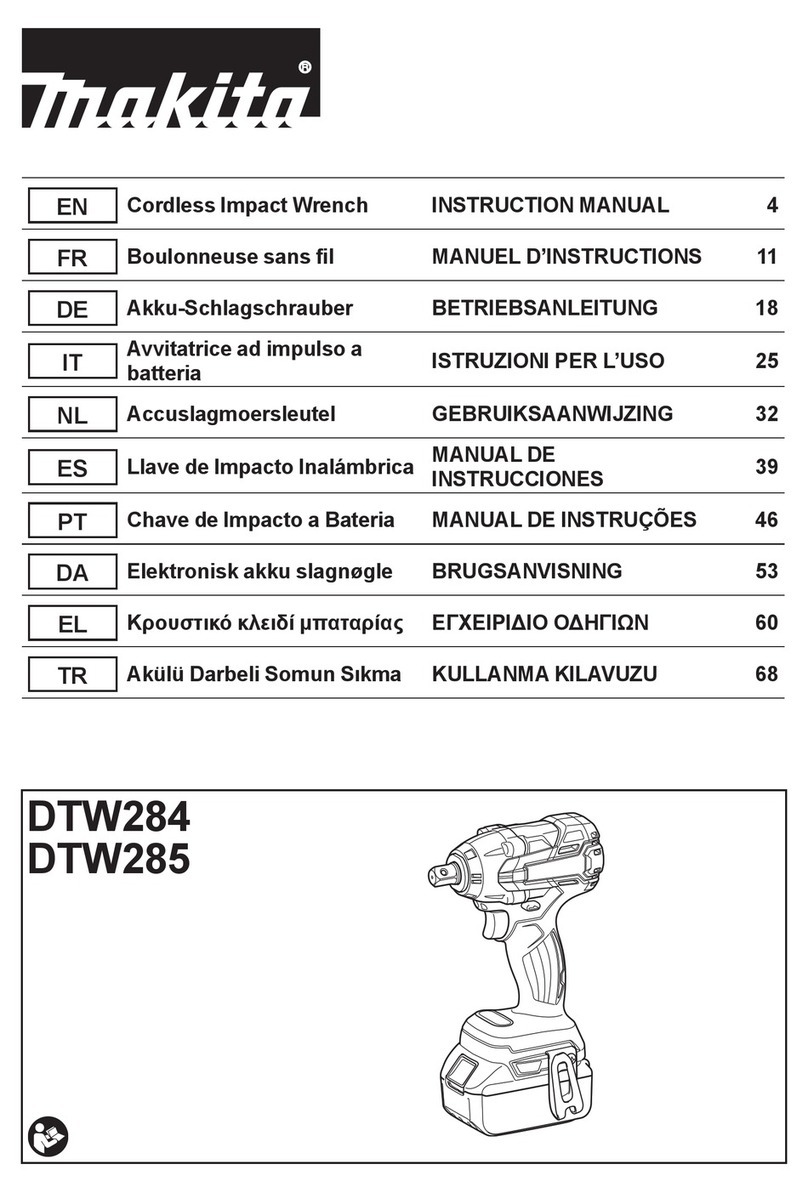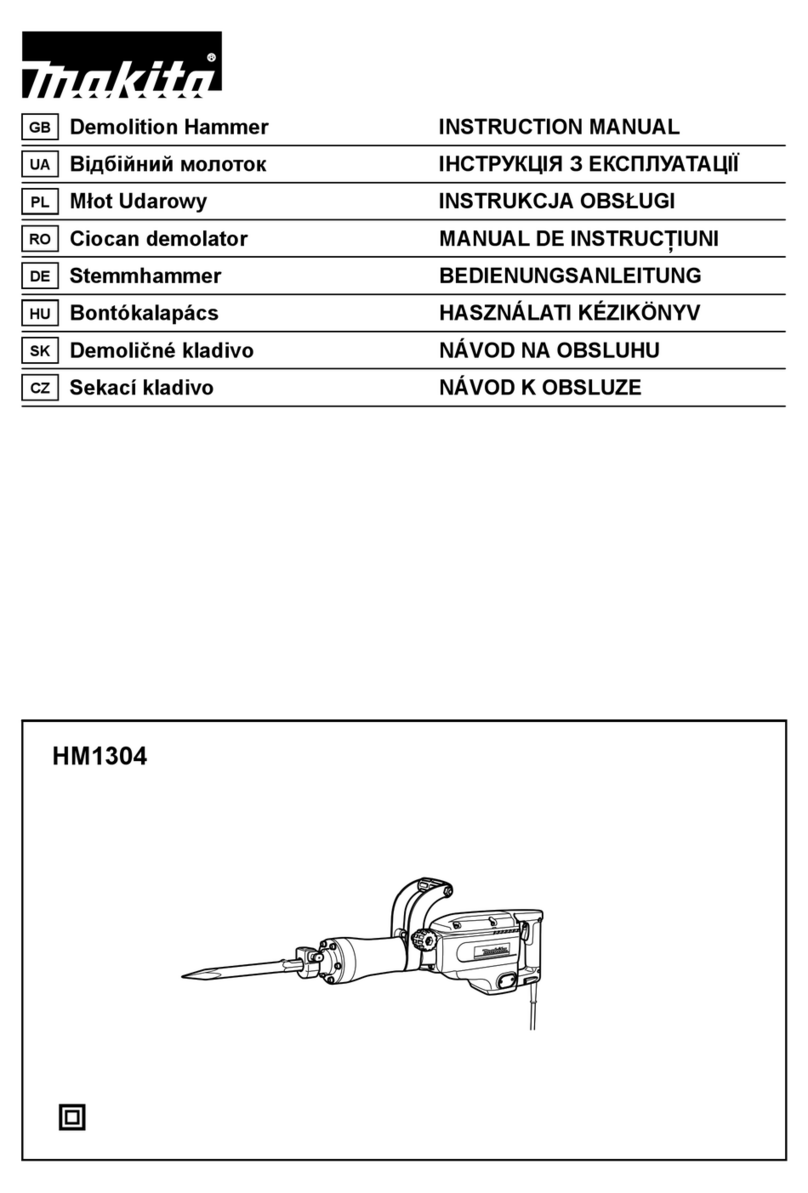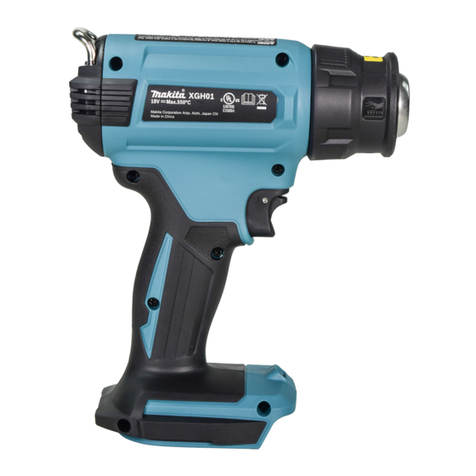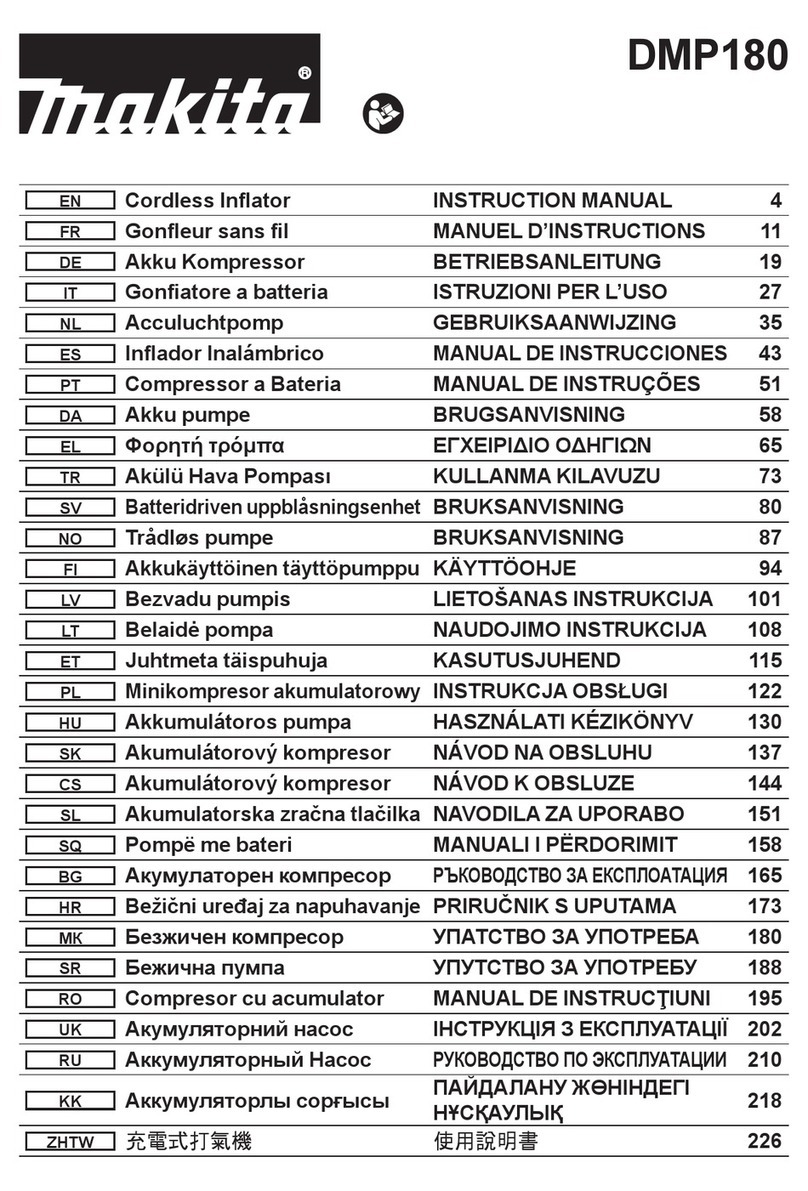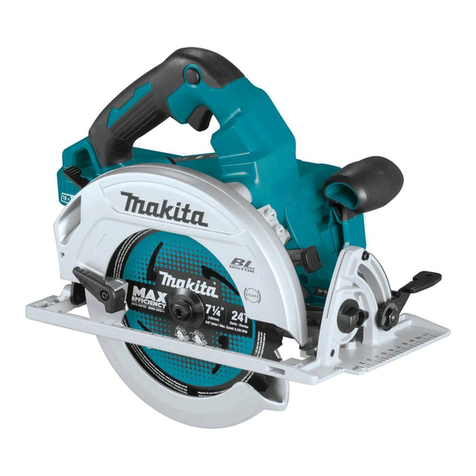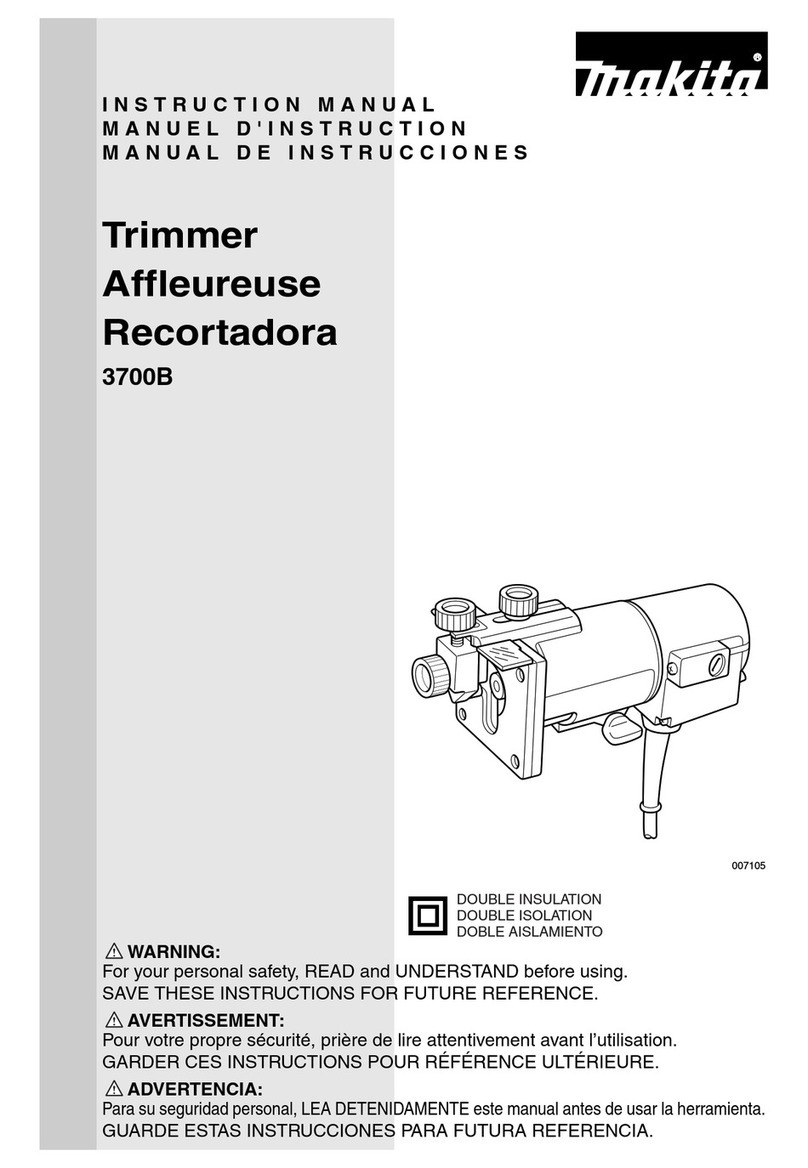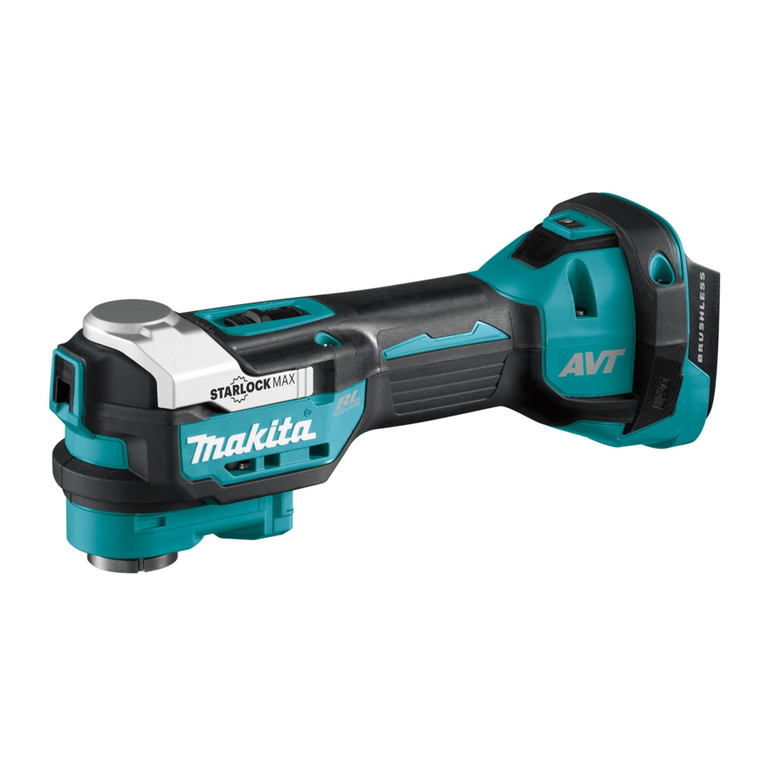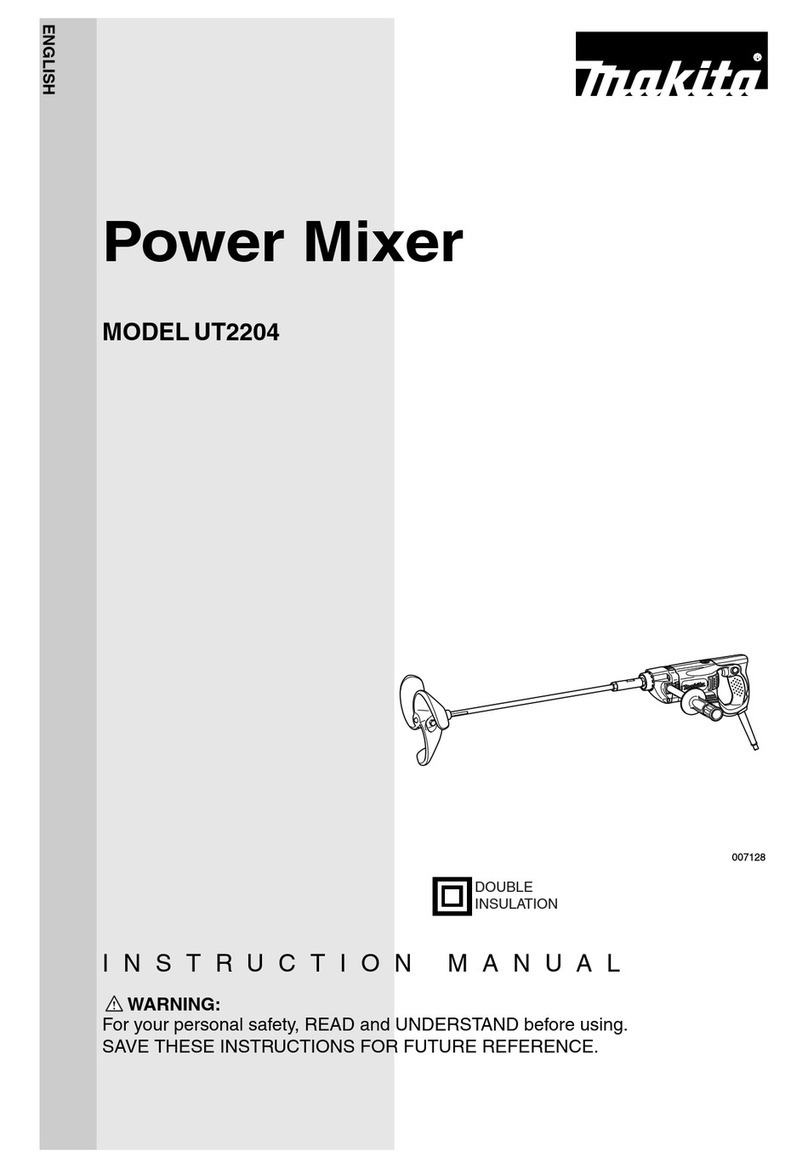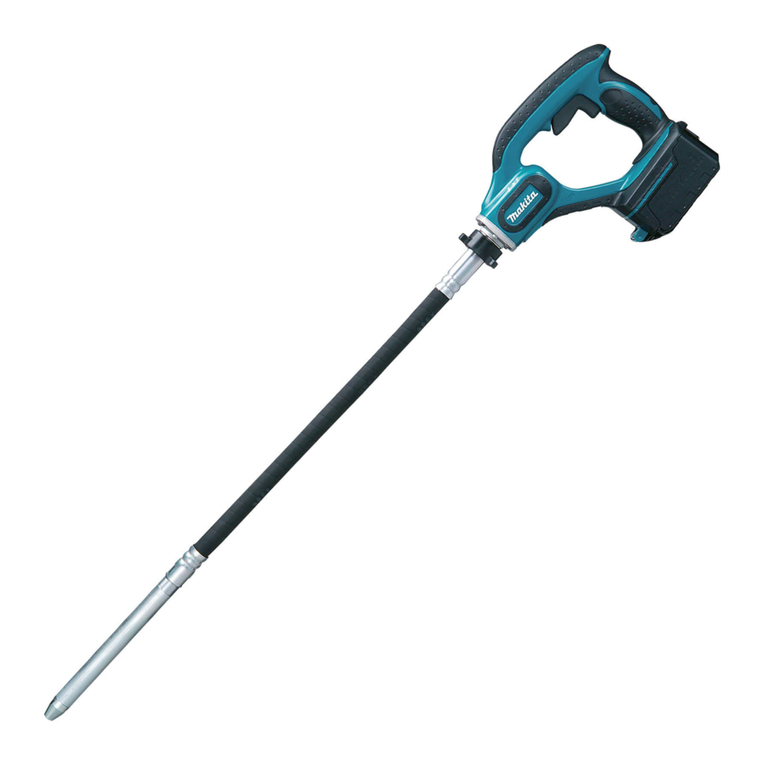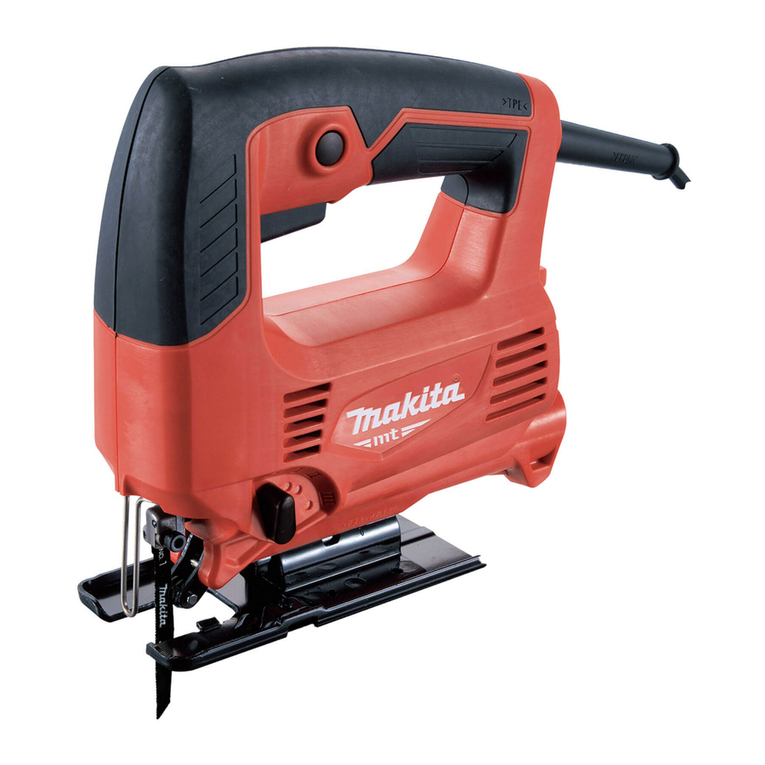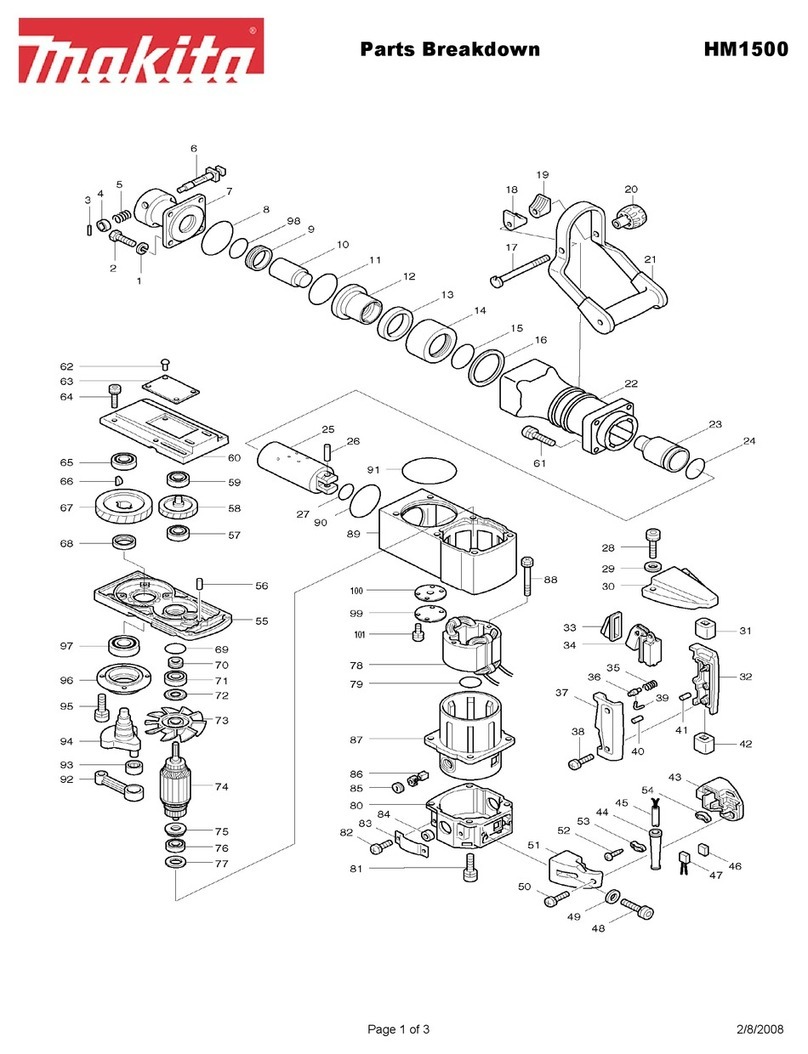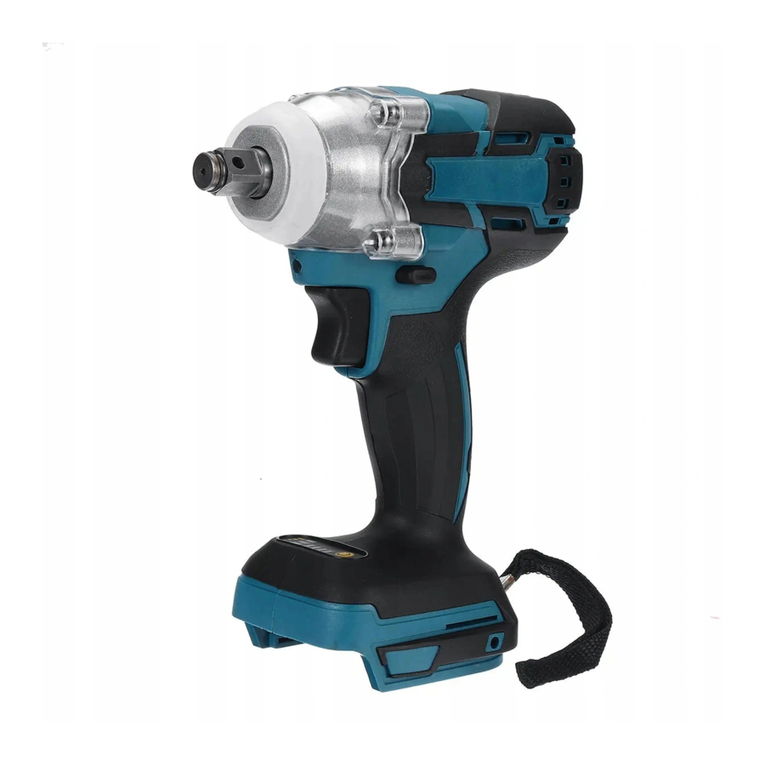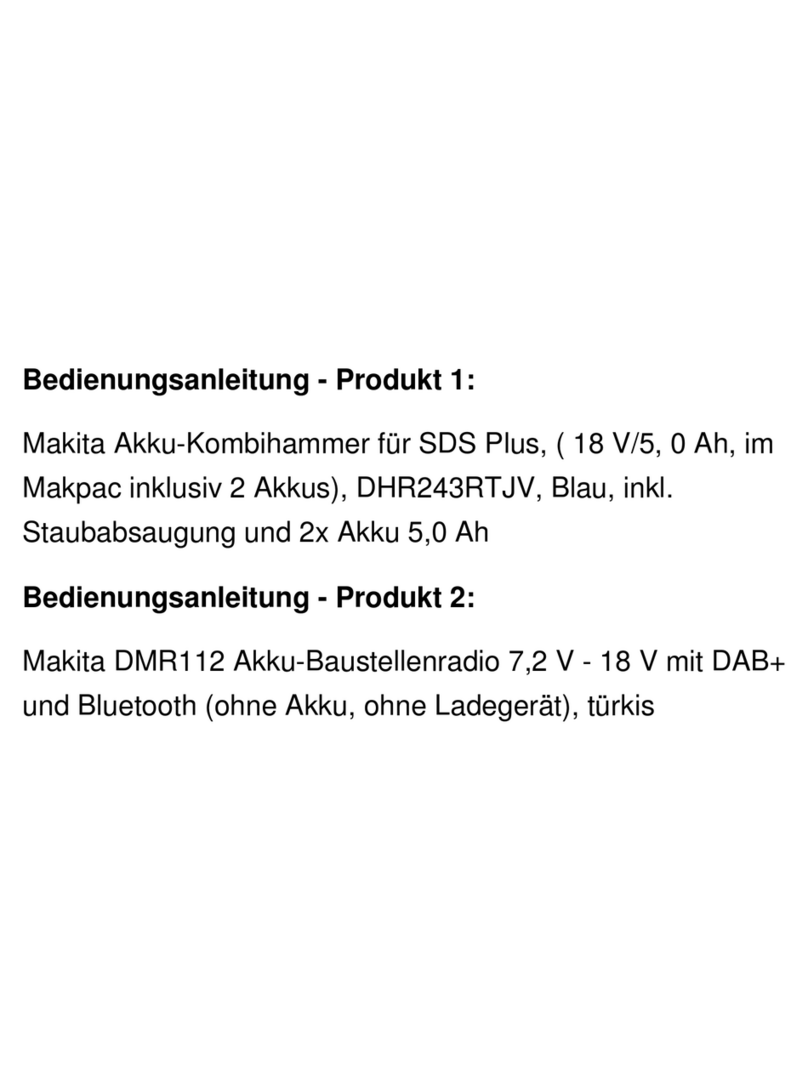3ENGLISH
3. Prevent unintentional starting. Ensure the
switch is in the off-position before connecting
to power source and/or battery pack, picking
up or carrying the tool. Carrying power tools with
that have the switch on invites accidents.
4. Remove any adjusting key or wrench before
turning the power tool on. A wrench or a key left
attached to a rotating part of the power tool may
5. Do not overreach. Keep proper footing and
balance at all times.
of the power tool in unexpected situations.
6. Dress properly. Do not wear loose clothing or
jewellery. Keep your hair, clothing, and gloves
away from moving parts.-
lery or long hair can be caught in moving parts.
7. If devices are provided for the connection of
dust extraction and collection facilities, ensure
these are connected and properly used.
dust collection can reduce dust-related hazards.
Power tool use and care
1. Do not force the power tool. Use the correct
power tool for your application.
rate for which it was designed.
2. Do not use the power tool if the switch does
not turn it on and off. Any power tool that cannot
be controlled with the switch is dangerous and
must be repaired.
3. Disconnect the plug from the power source
and/or the battery pack from the power tool
before making any adjustments, changing
accessories, or storing power tools. Such pre-
ventive safety measures reduce the risk of starting
the power tool accidentally.
4. Store idle power tools out of the reach of chil-
dren and do not allow persons unfamiliar with
the power tool or these instructions to operate
the power tool.
hands of untrained users.
5. Maintain power tools. Check for misalignment
or binding of moving parts, breakage of parts
and any other condition that may affect the
power tool’s operation. If damaged, have the
power tool repaired before use. Many accidents
are caused by poorly maintained power tools.
6. Keep cutting tools sharp and clean.
maintained cutting tools with sharp cutting edges
are less likely to bind and are easier to control.
7. Use the power tool, accessories and tool bits
etc. in accordance with these instructions, tak-
ing into account the working conditions and
the work to be performed.
for operations different from those intended could
result in a hazardous situation.
Battery tool use and care
1.
the manufacturer. A charger that is suitable for
when used with another battery pack.
2. -
nated battery packs.
3. When battery pack is not in use, keep it away
from other metal objects, like paper clips,
coins, keys, nails, screws or other small metal
objects, that can make a connection from one
terminal to another. Shorting the battery termi-
4. Under abusive conditions, liquid may be
ejected from the battery; avoid contact. If con-
liquid contacts eyes, additionally seek medical
help.
irritation or burns.
Service
1.
repair person using only identical replacement
parts.
tool is maintained.
2. Follow instruction for lubricating and chang-
ing accessories.
3. Keep handles dry, clean and free from oil and
grease.
Cordless stapler safety warnings
1. Always assume that the tool contains fasten-
ers. Careless handling of the stapler can result in
2. Do not point the tool towards yourself or any-
one nearby.
3. Do not actuate the tool unless the tool is
If the tool
is not in contact with the workpiece, the fastener
4. Disconnect the tool from the power source
when the fastener jams in the tool. While
accidentally activated if it is plugged in.
5. Use caution while removing a jammed fas-
tener.
and the fastener may be forcefully discharged
6.
Do not use this stapler for fastening electrical
cables. It is not designed for electric cable installation
and may damage the insulation of electric cables
7.
Always wear safety goggles or safety glasses with
side shield, and a full face shield when needed.
8. Keep hands and feet away from the ejection
port area.
9. Always remove the battery cartridge before
loading the fasteners, adjustment, inspection,
maintenance or after operation is over.
10. Make sure no one is nearby before operation.
Never attempt to drive fasteners from both the
inside and outside of wall at the same time.
-
senting a grave danger.
11. Watch your footing and maintain your balance
with the tool. Make sure there is no one below
when working in high locations.
12.
the like carefully to avoid possible electrical
shock, gas leakage, explosions, etc. caused by
stapling into live wires, conduits or gas pipes.
